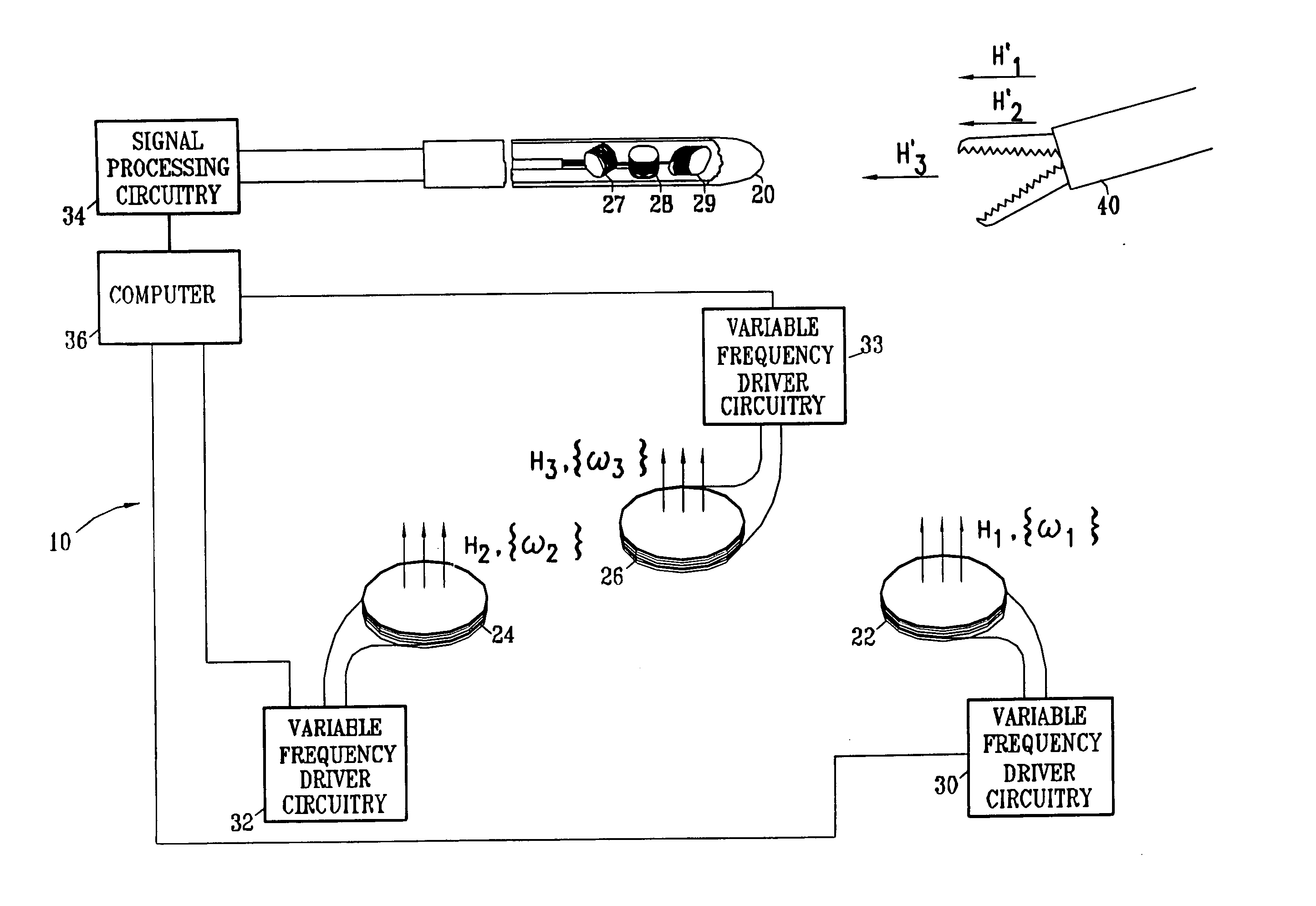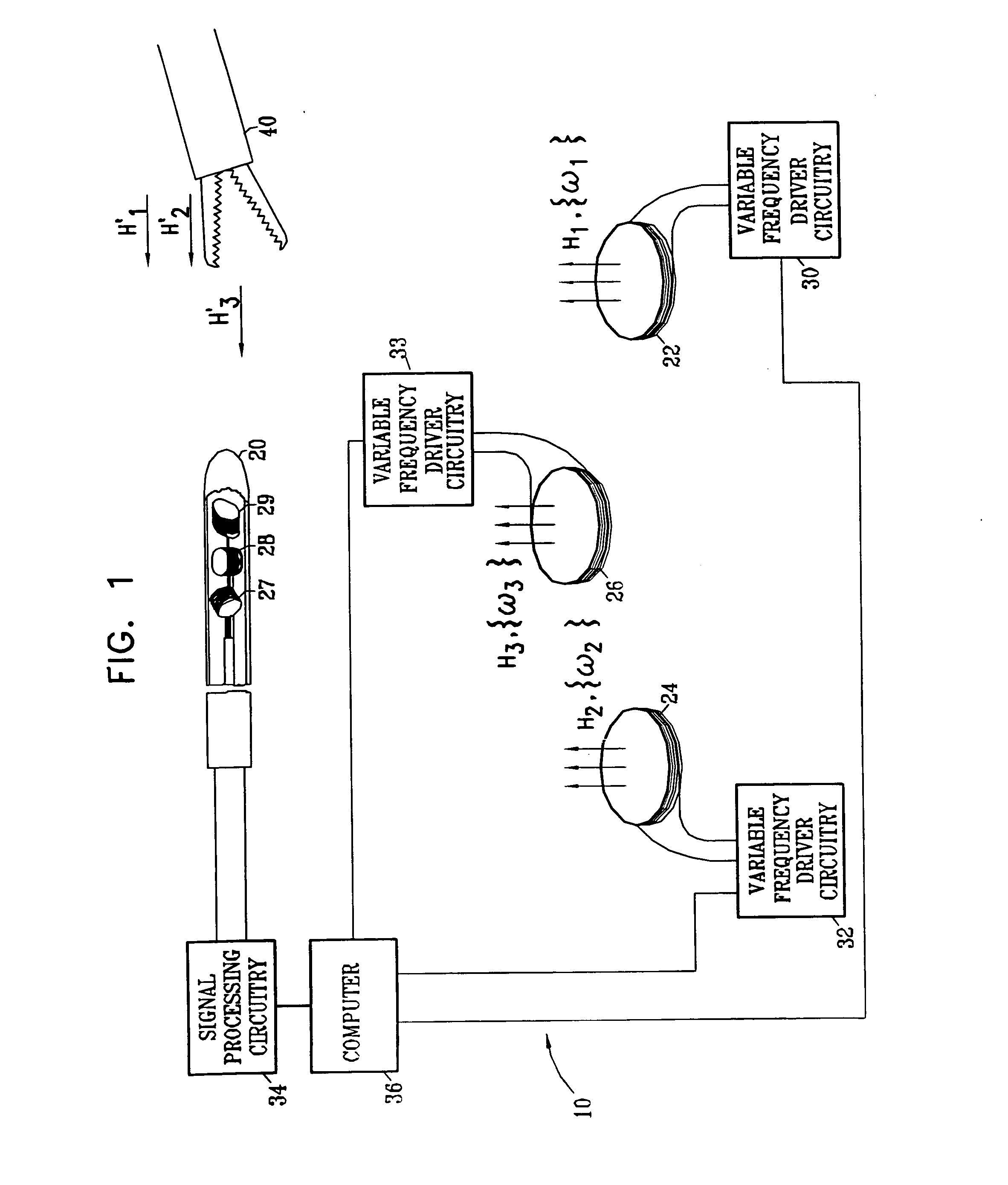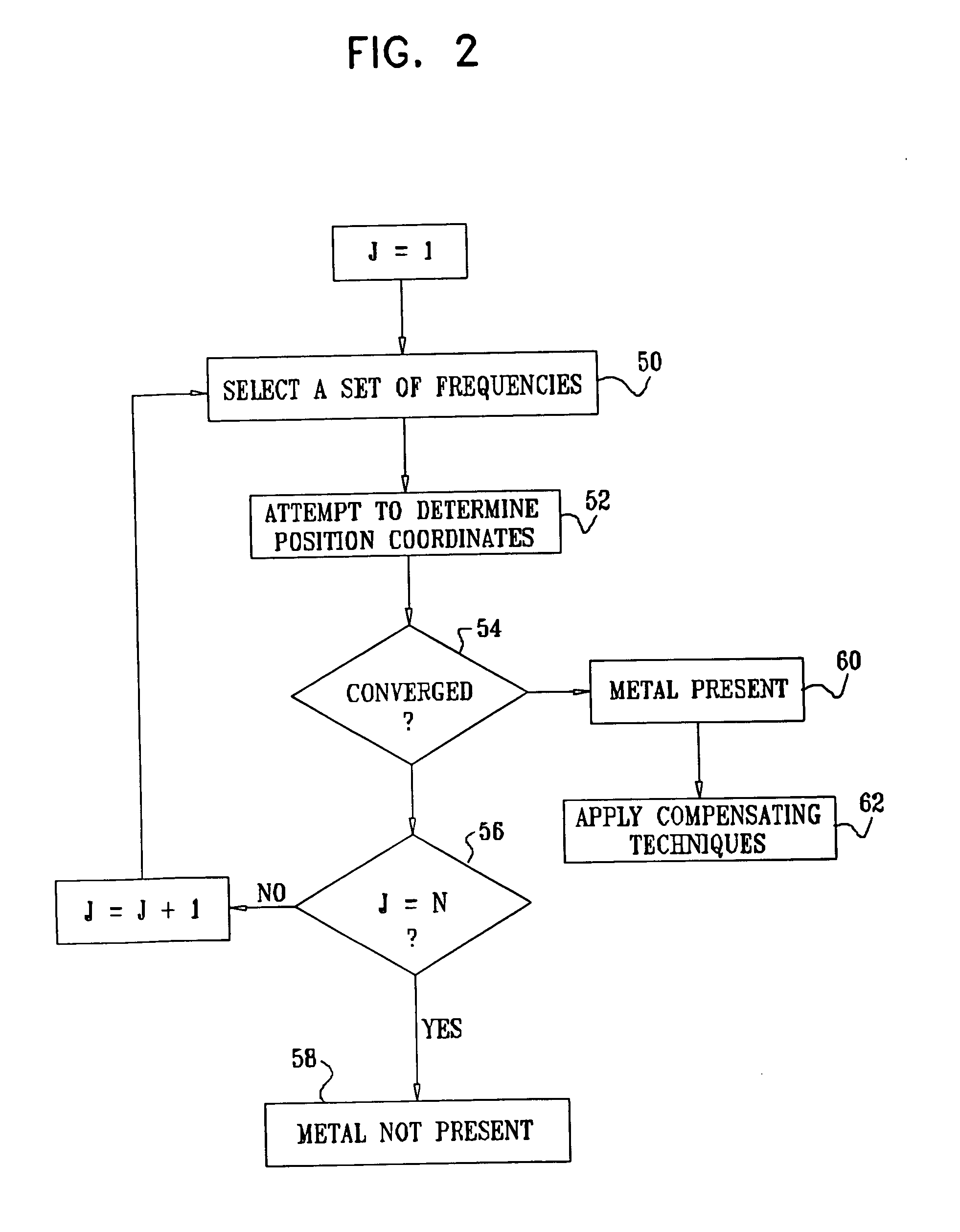Detection of metal disturbance in a magnetic tracking system
a magnetic tracking system and metal disturbance technology, applied in the field of noncontact tracking of objects, can solve the problems of inconvenient computation, inability to converge, and no longer precise mathematical models, and achieve the effect of enhancing the accuracy of an electromagnetic tracking system
- Summary
- Abstract
- Description
- Claims
- Application Information
AI Technical Summary
Benefits of technology
Problems solved by technology
Method used
Image
Examples
Embodiment Construction
Reference is now made to FIG. 1, which schematically illustrates a system 10 for tracking a probe 20, such as a catheter for medical use, in accordance with an embodiment of the present invention. Similar systems are described in the above-mentioned U.S. Pat. Nos. 5,319,199, 6,147,480 and 6,373,240 and Patent Publication US 2002 / 0065455 A1. Elements of the description are repeated here for the sake of clarity and completeness.
System 10 comprises a plurality of radiator coils 22, 24 and 26, which are placed in known positions and orientations. The radiator coils are driven by variable-frequency driver circuits 30, 32 and 33 to generate respective magnetic fields {right arrow over (H)}1, {right arrow over (H)}2 and {right arrow over (H)}3, at respective sets of frequencies {ω1}, {ω2} and {ω3}, in the vicinity of probe 20. Typically, sets {ω1}, {ω2} and {ω3} comprise frequencies in the approximate range of 100 Hz-20 kHz, although higher and lower frequencies may also be used. The se...
PUM
 Login to View More
Login to View More Abstract
Description
Claims
Application Information
 Login to View More
Login to View More - R&D
- Intellectual Property
- Life Sciences
- Materials
- Tech Scout
- Unparalleled Data Quality
- Higher Quality Content
- 60% Fewer Hallucinations
Browse by: Latest US Patents, China's latest patents, Technical Efficacy Thesaurus, Application Domain, Technology Topic, Popular Technical Reports.
© 2025 PatSnap. All rights reserved.Legal|Privacy policy|Modern Slavery Act Transparency Statement|Sitemap|About US| Contact US: help@patsnap.com



